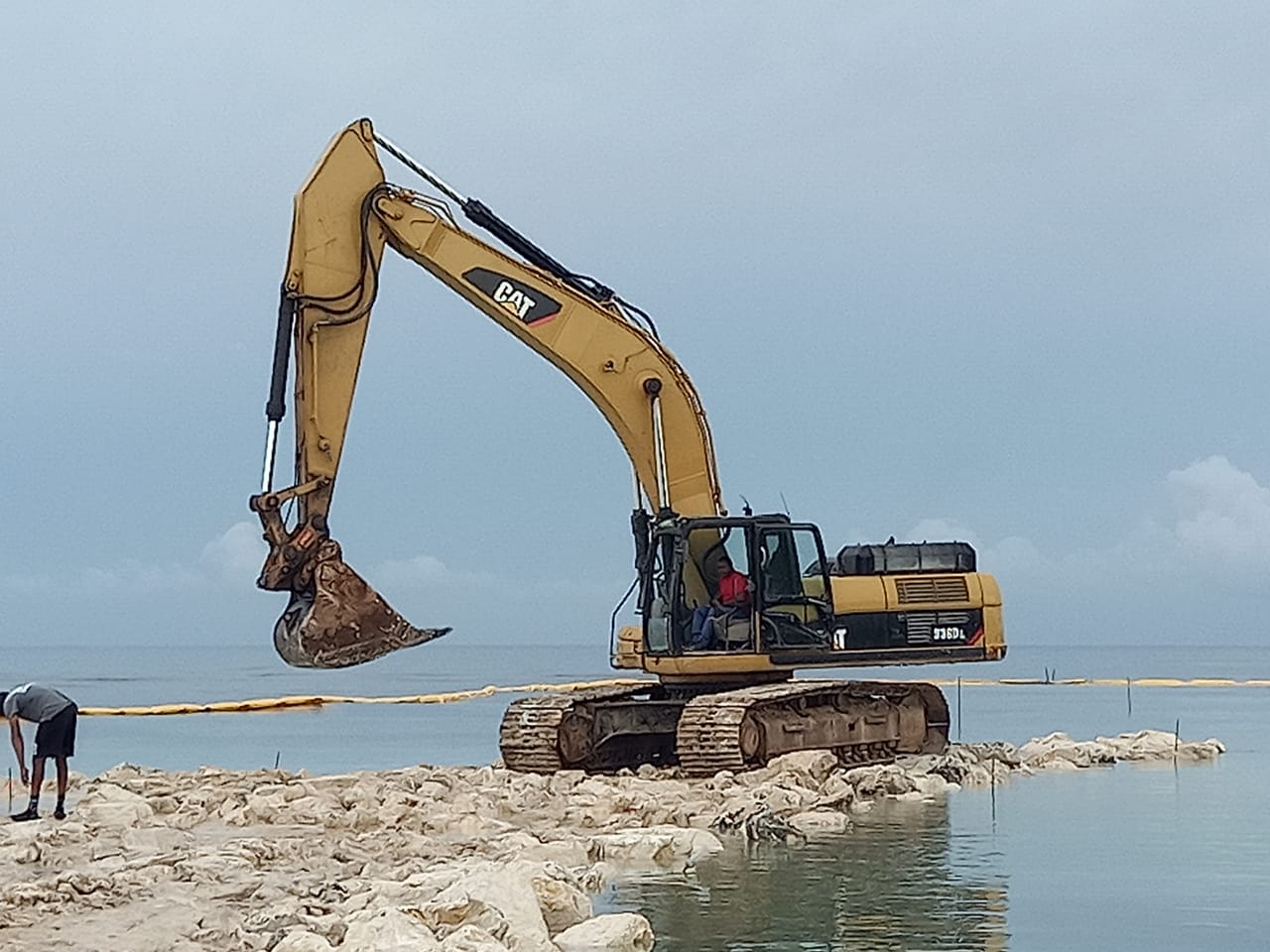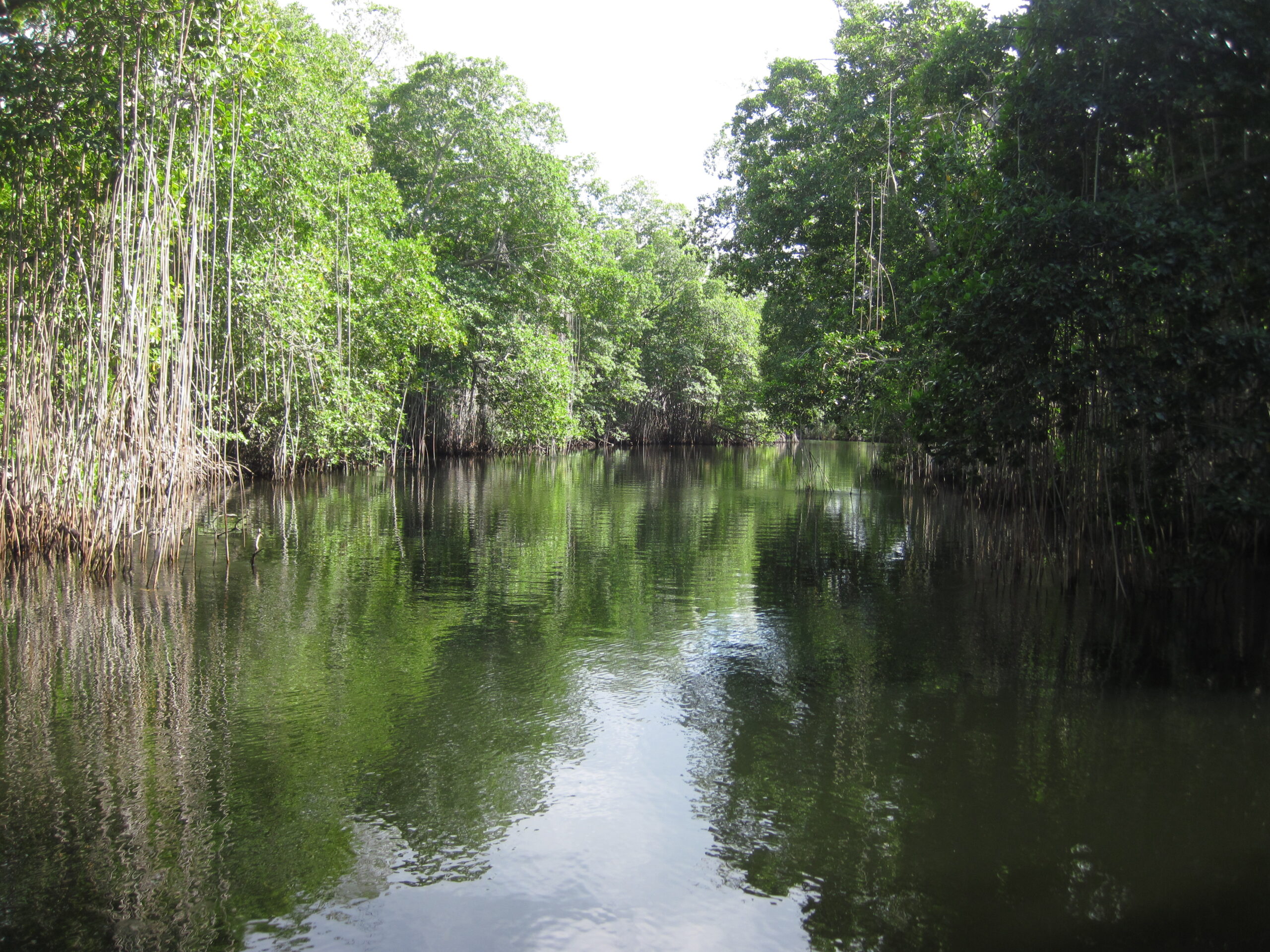In 2017 Barbuda was hit by Hurricane Irma, one of the most powerful storms on record in the Atlantic basin. This storm caused immense damage, with 3 deaths and losses and damages estimated at US$150m – $300m. The entire population had to be evacuated off the island and 95% of ALL infrastructure was destroyed by winds and storm surge. From a humanitarian perspective alone, this was a major disaster for the island. What is less known is that the hurricane caused a breach in the sand spit protecting the Codrington Lagoon and that breach has led to subsequent impacts that are now just coming to light 5 years later.
A Valuable Ecosystem
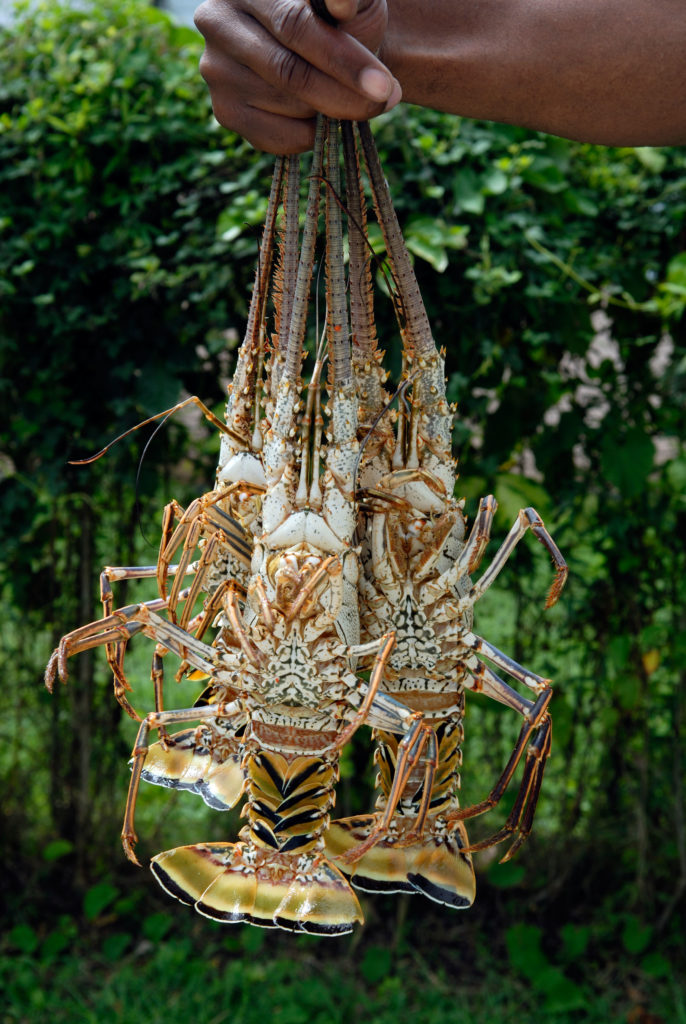 Codrington Lagoon sits on the western side of the tiny island of Barbuda. It stretches nearly 10km from north to south and is about 2km wide. It supports, among other things, the largest colony of magnificent frigatebirds in the Caribbean. Brown boobies and laughing gulls can also be spotted here, as well as the vulnerable West Indian whistling duck. Several species of migratory birds stop here on their migration routes, making the lagoon a popular destination for birdwatchers.
Codrington Lagoon sits on the western side of the tiny island of Barbuda. It stretches nearly 10km from north to south and is about 2km wide. It supports, among other things, the largest colony of magnificent frigatebirds in the Caribbean. Brown boobies and laughing gulls can also be spotted here, as well as the vulnerable West Indian whistling duck. Several species of migratory birds stop here on their migration routes, making the lagoon a popular destination for birdwatchers.
Apart from birds, several rare and endangered species, including the Antiguan racer snake and the Antiguan smooth-headed iguana, call the lagoon home. It is also a major nesting site for the critically endangered leatherback and hawksbill turtles.
The Lagoon provides critical nursery habitat for lobster, conch, and fish, which are important to the Barbuda economy. These species thrive in the lagoon and only migrate to the outside reefs and seagrass beds as adults. Several lobster species, including spiny lobster and slipper lobster, are harvested for their valuable meat, and exported to markets in the nearby French and Dutch islands, and around the world.
Finally, the lagoon plays an important role in protecting the main town of Codrington from the direct impacts of storm surge and hurricanes that may pass the island on its south and/or west coasts.
The Breach
Hurricane Irma demolished what was once this lagoon’s only entrance, leaving it open to the sea. It should be noted that the spit had been breached by a previous hurricane approximately 2 decades ago, but it repaired itself within 5 years. By contrast, the breach caused by Irma has continued to widen.
A breach allows more seawater to flow into the lagoon, changing the complex and delicate spatial temperature and salinity regimes of this waterbody. In addition, a wider entrance to the sea means that more wave energy can enter the lagoon in the winter months when swells from the North Atlantic are common. The delicate balance of the lagoon ecosystem can therefore be disrupted and declines in the population of lobster, conch and other species could occur.
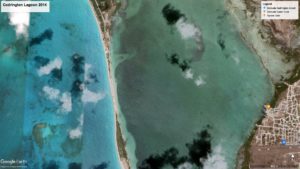
Google Earth image of Codrington Lagoon in 2014
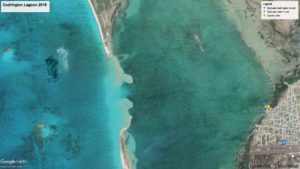
Google Earth image of Codrington Lagoon in 2019
It is not yet clear how this new and growing breach in the lagoon will affect the fisheries industry in Barbuda in the long term. It is, however, likely that fishers will face challenges as a result of the breach and will need to adapt to these changes to survive. This could include efforts to restore the lagoon ecosystems and protect them from future damage, as well as efforts to improve the sustainability of the fisheries in the region.
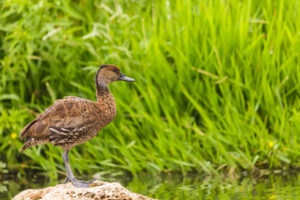
The vulnerable West Indian Whistling Duck
Restoring Balance
To restore sustainability and balance to the lagoon ecosystem, and hence economic benefits to the fishing community of Codrington, we suggest a detailed study of the lagoon and its surrounding areas that measures: temperature and salinity in various locations within the lagoon; water depths inside and just outside of the lagoon; the waves and currents that shape this section of the Barbuda shoreline; the effects of varying widths of breach on these waves and currents; characteristics of the lobster and conch fisheries; and an investigation of the prevailing sediment transport patterns that maintain this spit.
Information from these investigations would allow some level of prediction as to the likely outlook for this sand spit and the lagoon it protects. Will it widen to the point where the ocean enters the lagoon? Or can this be stopped? Would nature-based solutions be an option in stabilising the sand spit?
If no intervention is introduced and the loss of sand spit continues, the investigations should be used to predict the impacts of changes on the lobster and conch fisheries. The immediate and most challenging issue then becomes sourcing adequate climate funding to support the work that needs to be done.
